Unit 1&2, Hindustan Kohinoor Estate, Next to Embassy 247, LBS Marg, Vikhroli West, Mumbai-400083.
Startech Engineers provides the highest quality of protection for any facility through a wide variety of fire suppression systems, from basic wet pipe sprinkler systems and dry pipe sprinkler systems to complex special hazards systems, such as foam and chemical suppression systems. With a network of companies offering a broad expanse of coverage, we complete fire protection systems projects for industrial, commercial, retail and residential companies.
STARTECH ENGINEERS sales consultants and project managers work closely with clients to provide detailed explanations for fire suppression system options and the benefits of each. Our companies design each fire protection system to meet clients’ specific needs, timeline and budget, as well as all applicable fire codes and regulations.
Our goal is to help you choose the system that best fits your needs for simplicity, reliability and ease of service. And with systems containing specialized, customizable features, such as concealed sprinkler heads, pre-action systems and a variety of materials, you’ll find STARTECH ENGINEERS can produce a system that meets all your fire protection needs.
STARTECH ENGINEERS sales consultants and project managers work closely with clients to provide detailed explanations for fire suppression system options and the benefits of each. Our companies design each fire protection system to meet clients’ specific needs, timeline and budget, as well as all applicable fire codes and regulations.
Our goal is to help you choose the system that best fits your needs for simplicity, reliability and ease of service. And with systems containing specialized, customizable features, such as concealed sprinkler heads, pre-action systems and a variety of materials, you’ll find STARTECH ENGINEERS can produce a system that meets all your fire protection needs.
-
fire hydrant system
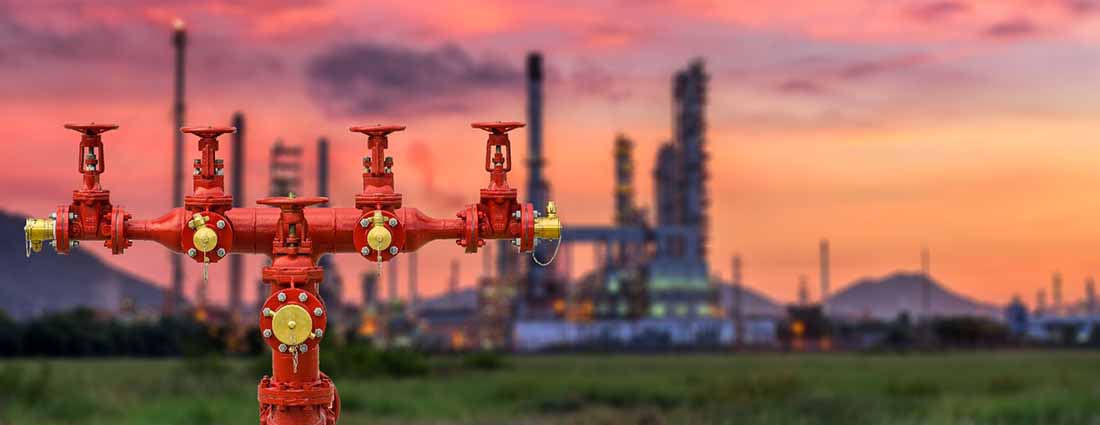 Being one of the oldest but yet the most effective and common fire fighting solution, a well-designed and a well laid out Hydrant System forms the backbone of the entire fire fighting system. It comprises of heavy duty above & underground piping with accessories. External and Fire Escape Hydrant valves are provided at every strategic location. A fire hydrant is a pipe that allows water to flow from a water main with the control of a valve in order to put out a fire.
Being one of the oldest but yet the most effective and common fire fighting solution, a well-designed and a well laid out Hydrant System forms the backbone of the entire fire fighting system. It comprises of heavy duty above & underground piping with accessories. External and Fire Escape Hydrant valves are provided at every strategic location. A fire hydrant is a pipe that allows water to flow from a water main with the control of a valve in order to put out a fire.
Fire Hydrant Protection System is designed to fight fire of huge proportions, in all classes of risks. It is designed to be in operation even if a part of the affected structure collapses.
Dry barrel and wet barrel are the two kinds of Fire Hydrants. The wet barrel fire hydrant holds a constant water supply, while the dry barrel fire hydrant needs to have a valve release to let water in.
It is designed to provide rapid access to water in the event that a fire breaks out. Fire Brigade Contactions are installed as standalone systems which act like building-specific fire hydrants, providing fire protection which will be readily available to fire fighters.
Guidelines and approval for Hydrant System are available from various national and international organizations like: NBC, NFPA, TAC, IS, FM and Local Fire Authorities.
Contact us today for more information about Fire Hydrant systems for fire suppression -
Wet Pipe Fire Sprinkler System
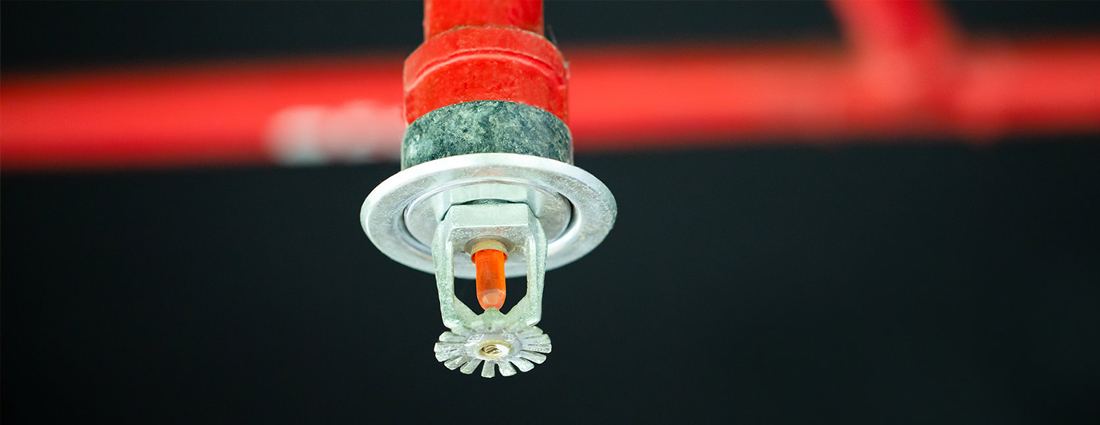 Most simplistic and reliable fire safety system
Wet pipe sprinkler systems are the simplest and most common fire suppression method on the market today. They are comprised of pipes that constantly contain pressurized water. When an individual sprinkler in the system is activated by heat from fire, the automatic, closed-type sprinkler head immediately discharges water onto the fire. As more individual sprinkler heads are subsequently activated by heat, they too will discharge water onto the fire until it is controlled or extinguished.
Most simplistic and reliable fire safety system
Wet pipe sprinkler systems are the simplest and most common fire suppression method on the market today. They are comprised of pipes that constantly contain pressurized water. When an individual sprinkler in the system is activated by heat from fire, the automatic, closed-type sprinkler head immediately discharges water onto the fire. As more individual sprinkler heads are subsequently activated by heat, they too will discharge water onto the fire until it is controlled or extinguished.
Wet Pipe Sprinkler System Services: Full design and engineering services Installation of systems from start to finish All testing, service and repair available 24 hours a day
Wet pipe fire sprinkler systems can be installed in buildings not susceptible to freezing (i.e., where temperatures are above 40 degrees Fahrenheit). At Startech Engineers, we design, install and repair wet pipe fire suppression systems for a variety of industries, including industrial, commercial, retail and residential companies. Whether it's a new project or building retrofit, we provide the project management to take your system from start to finish with minimal interruption to your busy schedule.
STARTECH ENGINEERS is a solutions provider for the life safety industry in all the States of India. We also install a variety of other fire suppression systems including dry pipe sprinklers.
For more information on wet pipe fire sprinkler systems, contact us or request a quote. -
In-Rack Sprinkler System
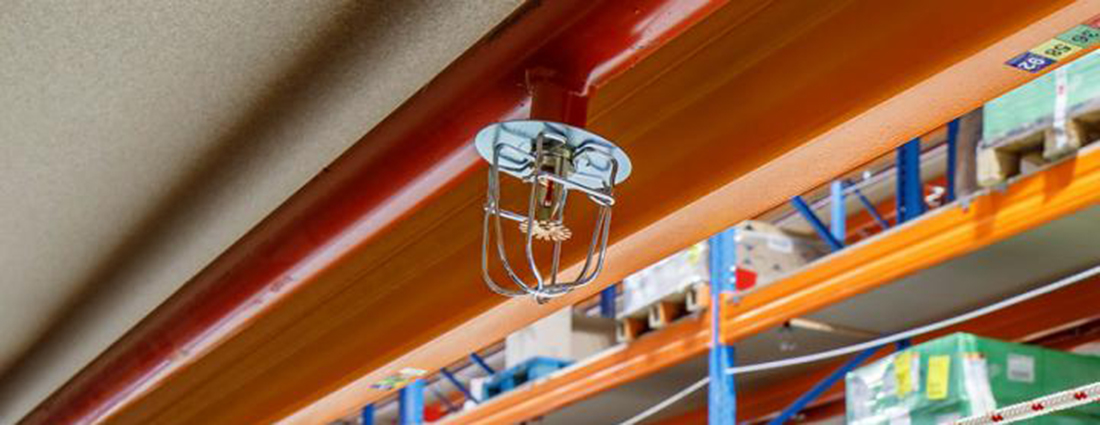 When you operate a warehouse, a high-quality fire protection system is crucial to protecting your assets. And when your facility houses high-hazard items, such as flammable liquids, paper or exposed plastics, it’s even more important.
When you operate a warehouse, a high-quality fire protection system is crucial to protecting your assets. And when your facility houses high-hazard items, such as flammable liquids, paper or exposed plastics, it’s even more important.
Startech Engineers designs, installs and maintains in-rack fire sprinkler systems to protect racked storage areas, such as warehouses, where early suppression fast response (ESFR) sprinkler systems cannot be employed. While these sprinklers will not prevent a fire from starting – in fact, they rely on heat and smoke generated to trigger them – they will help contain the fire to a specific area and extinguish it in a short amount of time.
Installed along a network of piping secured within rack structures, in-rack sprinklers release water into targeted areas, minimizing damage and downtime for the entire facility. With detectors in close proximity to stored materials and equipment, the system continuously monitors for smoke and heat to provide the quickest possible response in the event of a fire. In-rack sprinklers from STARTECH ENGINEERS are ideal for facilities that use large industrial shelving, because they ensure fires that begin in the middle of the rack can be extinguished before consuming materials on shelves or racks.
Contact us today for more information about in-rack sprinkler systems. -
Pre-action Fire Sprinkler System
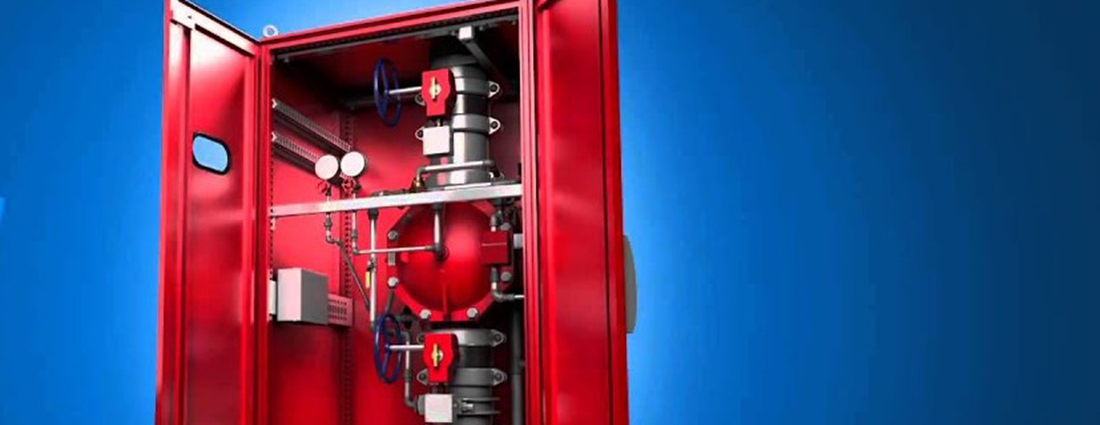 Pre-action fire sprinkler systems employ the basic concept of a dry pipe fire sprinkler system in that water is not normally contained within the pipes. But rather holding water from piping via pressurized air or nitrogen, pre-action sprinkler systems restrain water with an electrically operated valve, known as a pre-action valve.
Pre-action fire sprinkler systems employ the basic concept of a dry pipe fire sprinkler system in that water is not normally contained within the pipes. But rather holding water from piping via pressurized air or nitrogen, pre-action sprinkler systems restrain water with an electrically operated valve, known as a pre-action valve.
Startech Engineers designs, installs and maintains pre-action pipe fire sprinkler systems for a variety of companies that operate high-hazard industrial and commercial applications, including archival vaults, fine art storage rooms, rare book libraries and computer centers.
The system’s discharge is a two-step process: First, the innovative detection system identifies smoke or heat, which activates a pre-action valve that allows water to flow into piping and effectively creates a wet pipe sprinkler system. Second, individual sprinkler heads release to let water flow onto the fire. This second step provides an added level of protection against inadvertent discharge, which makes pre-action systems ideal for water-sensitive environments.
Contact us today for more information about pre-action sprinkler systems for fire suppression. -
ESFR
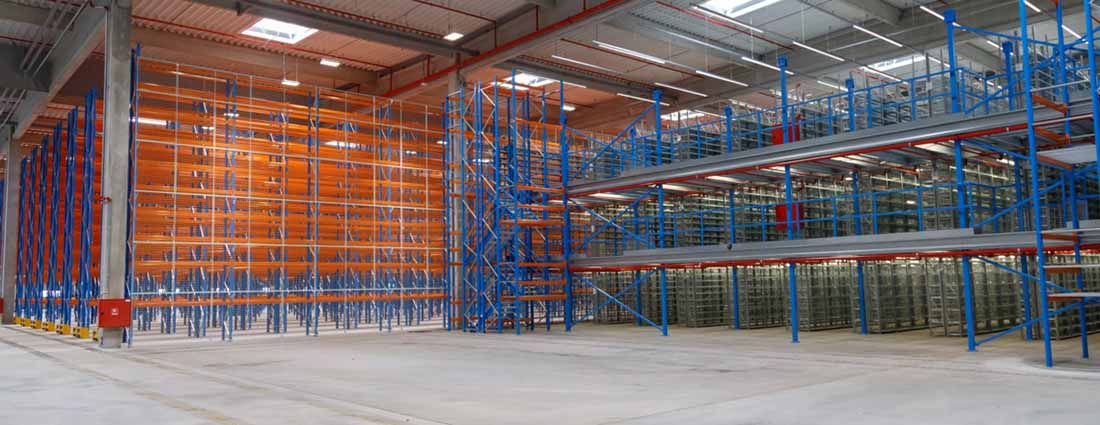 Using early suppression fast response (ESFR) sprinkler systems, Startech Engineers provides an exceptional fire protection alternative to traditional, in-rack sprinklers.
Using early suppression fast response (ESFR) sprinkler systems, Startech Engineers provides an exceptional fire protection alternative to traditional, in-rack sprinklers.
Rather than merely controlling the growth of a fire, as in in-rack sprinklers, ESFR systems target the fire’s origin and completely extinguish the fire by releasing large volumes of water. With quick-responding, large-volume, high-velocity sprinkler heads within ceiling spaces, our ESFR systems can enhance your entire industrial facility’s fire protection.
ESFR systems are mainly used to protect warehouses with a variety of high-piled storage, including palletized, solid pile, shelf, bin box, or rack storage of materials. The elimination of in-rack sprinklers helps warehouses avoid unintended water discharge caused by the rupture of a sprinkler or a pipe struck by a piece of material handling equipment or a pallet load. Plus, ESFR systems from STARTECH ENGINEERS allow you to rearrange storage racks without the costly reconfiguration of in-rack piping when such systems are installed in racks.
Unique features and benefits:- Speed – ESFR sprinkler heads sense a fire and begin spraying water in half the time of conventional heads.
- Volume – ESFR sprinkler heads release around two times the water amount (60 gallons per minute) than conventional sprinkler heads (25 to 30 gallons per minute).
- Droplet size – ESFR sprinkler heads release larger droplets of water with greater momentum than conventional heads.
- Cost – ESFR systems provide greater fire protection than conventional systems and also cost 30 to 50 percent less.
Contact us today for more information about ESFR sprinkler systems. -
Deluge Fire Sprinkler System
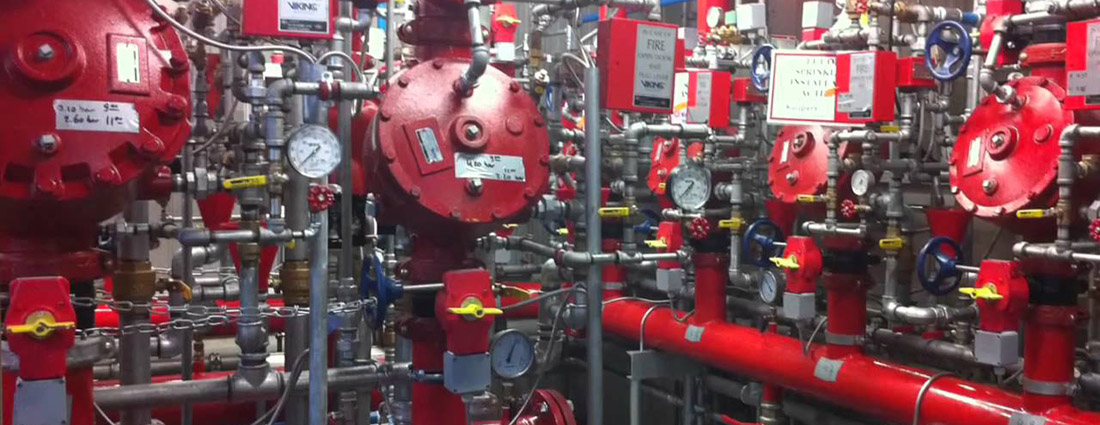 Deluge fire sprinkler systems feature open-type sprinkler heads attached to a dry pipe that is connected to a main water supply. Using an innovative detection system that recognizes smoke or heat, this fire suppression installation activates a valve that releases water to all sprinklers.
Deluge fire sprinkler systems feature open-type sprinkler heads attached to a dry pipe that is connected to a main water supply. Using an innovative detection system that recognizes smoke or heat, this fire suppression installation activates a valve that releases water to all sprinklers.
Startech Engineers designs, installs and maintains deluge pipe fire sprinkler systems for a variety of companies that operate high-hazard industrial and commercial applications, including power plants, chemical processing facilities and aircraft hangars – places where high-volume, high-velocity suppression is essential to stop fire from spreading.
Similar to pre-action pipe fire sprinkler systems, deluge sprinkler systems include open-type sprinkler heads and pipes without air pressurization. However, rather than requiring individual sprinkler heads to release water when the system discharges, deluge systems emit water from every sprinkler. This rush of water is designed to quickly smother all varieties of chemical and mechanical fires, increasing personnel and property safety.
Contact us today for more information about deluge sprinkler systems for fire suppression. -
HVWS/MVWS System
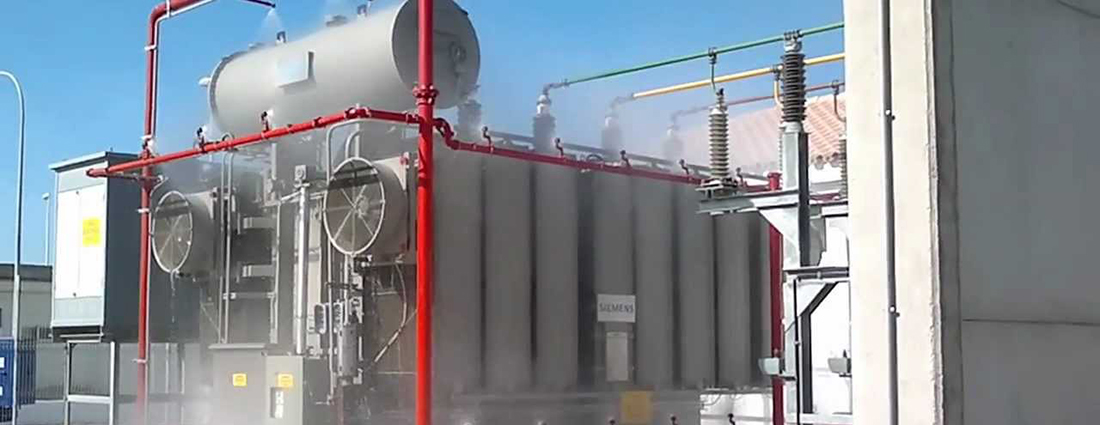 We offer our clients High / Velocity Water Spray Systems. A special fixed pipe system connected to a reliable source of fire protection water supply and equipped with water spray nozzles for specific water discharge and distribution over the surface or area to be protected. The piping system is connected to the water supply through an automatically actuated Deluge Valve, which initiates flow of water. Automatic actuation is achieved by operation of automatic detecting equipment installed along with water spray nozzles. The following areas to be provided by Medium Velocity Water Spray system:
We offer our clients High / Velocity Water Spray Systems. A special fixed pipe system connected to a reliable source of fire protection water supply and equipped with water spray nozzles for specific water discharge and distribution over the surface or area to be protected. The piping system is connected to the water supply through an automatically actuated Deluge Valve, which initiates flow of water. Automatic actuation is achieved by operation of automatic detecting equipment installed along with water spray nozzles. The following areas to be provided by Medium Velocity Water Spray system:
- General Area Protection (for example: working plants like LPG bottling plants, chemical plants where flammable solvents are stored and/or used etc.)
- Horizontal storage vessels (for example LPG bullets etc)
- Vertical storage vessels (for example: Benzene, Xylene, Toluene tankage)
- Spherical storage vessels (for example LPG bullets, spheres etc)
- Spot protection (protection of selective areas / equipment)
Contact us today for more information about HVWS/MVWS systems for fire suppression. -
Gas Suppression system
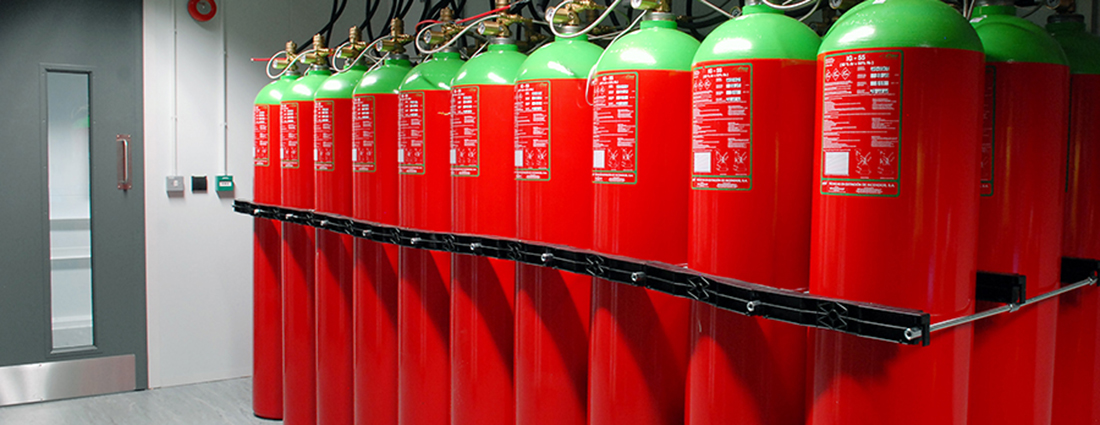 “We will help analyse your needs to determine the most suitable fire suppression agent for your application and your business”
“We will help analyse your needs to determine the most suitable fire suppression agent for your application and your business”
We at Startech Engineers can be your trusted partner for Design, Supply, Installation, Commissioning and Maintenance of Gas Suppression System for a variety of Commercial, Industrial, Banks, Data centres applications. Our trained and certified engineers can provide you the system with utmost quality.
Gaseous Fire Suppression or Clean Agent fire suppression are terms used to describe gases used to extinguish fires. Typically gaseous agents work in one of two ways, the first is to inert the atmosphere reducing oxygen levels to a level that will no longer sustain combustion, the second is to react chemically with the fire absorbing heat and causing the chain reaction of combustion to break down.
Clean Agent fire extinguishing systems are typically used to protect three dimensional enclosures containing high value assets that are vital for business continuity, and assets that cannot be protected by traditional sprinkler systems due to the potential for water damage. Typical examples of system applications include telecommunication facilities, clean rooms, data processing centres and museums.
Clean Agent fire suppression products supplied by Startech Engineers are environmentally friendly and cost effective solutions and meet all regulatory authority requirements.
Where easy clean-up, minimal down time, business continuity and people safety are overriding factors, you need to consider clean agent gaseous suppression for your fire protection needs. We will help analyse your facility and operations to determine the most suitable fire suppression agent for your application and your business.
A fire is DEVASTATING! Conventional fire systems provide personal and structural protection. But when it comes to high value assets and irreplaceable items, water can be just as damaging as any fire!
So why clean agent systems?- Would your equipment be damaged or inoperable if impacted by water (fire sprinklers) or dry chemicals?
- Is your equipment and service difficult to replace?
- Do people occupy your facility?
- Can your facility tolerate business interruptions and downtime? Will your customers?
If the answer is “Yes” to any of the above, then a Clean Agent Fire Suppression System is the right SOLUTION FOR YOU!
With Gas Suppression System from STARTECH ENGINEERS, you can rest easy knowing that, if your company were to experience a fire, you would be able to immediately resume operations without the interruption of a costly clean up and the expense of asset damage from suppressant residue.
Contact us today for more information about Gas suppression systems. -
Foam/Chemical Suppression
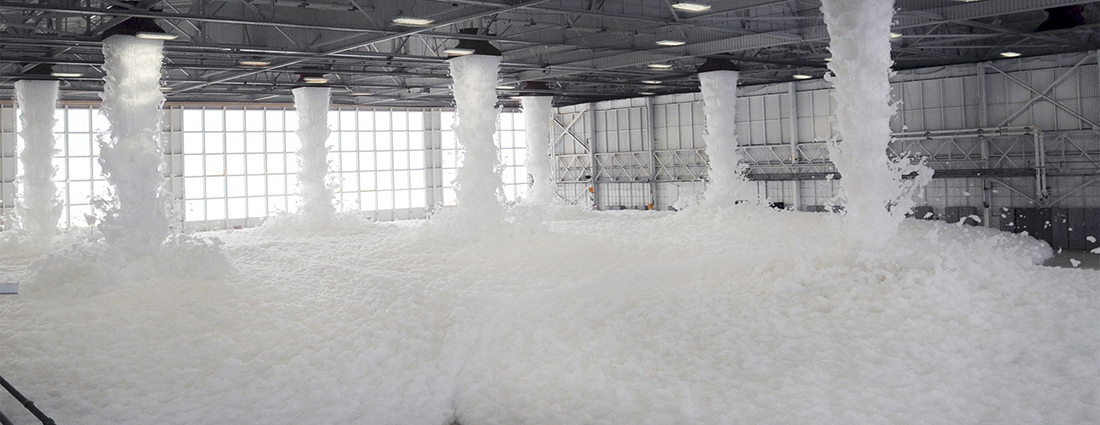 The system that controls burning flammable liquids
The system that controls burning flammable liquids
Startech Engineers provides a turnkey solution for foam/chemical fire suppression systems. This type of fire sprinkler system controls burning flammable liquids and natural gas using a mixture of foam and water. The foam-water mixture cools the fuel surface significantly. It also forms a blanket that prevents oxygen from getting to the fire and suppresses the release of flammable vapors that could ignite in the air.- Foam/chemical fire suppression systems are ideal for commercial and industrial applications
- Used extensively in facilities that have flammable liquid storage
- If there's a fire, we'll get your system restored and operational quickly
At STARTECH ENGINEERS, we design, install and maintain foam/chemical fire suppression systems for a variety of commercial and industrial applications, from LNG storage/manufacturing facilities, refineries and warehouses to aircraft hangars, marine facilities and jet engine test facilities.
STARTECH ENGINEERS is certified, trained and experienced in the life safety industry. We are a solutions provider of all types of sprinkler systems. For more information on any of our fire suppression products, contact us. Request a quote today and we can get your foam/chemical sprinkler system up and running quickly and efficiently with no interruption to your business.
Put our industry leading foam fire suppression solutions to work for you - Contact us today -
Fire Alarm
 Fire detection and alarm systems play an important role in commercial and industrial fire protection. Startech Engineers offers a variety of system options designed, quoted, installed, tested, certified and maintained by our outstanding staff including:
Fire detection and alarm systems play an important role in commercial and industrial fire protection. Startech Engineers offers a variety of system options designed, quoted, installed, tested, certified and maintained by our outstanding staff including:
- Fully addressable fire alarm systems
- Flame imaging detection systems
- Systems rated for special hazards and extreme environmental conditions
- Visual smoke detection systems
- Linear detection for cold storage & special hazards
- Air sampling systems
- Network systems for large applications
- Fire detection in coal handling system
- UV/IR smoke detection
- LHS detection system
We are your one-stop shop when it comes to fire alarm systems because we are able to not only design and install systems, but we can also provide maintenance, monitoring and repair services for life.
The Latest Technology
We work with a number of vendors and distributors and are always on top of the latest technologies. For example, our engineers and technicians work with various Expandable Emergency Evacuation System, which is part of the latest generation of fire alarm control panels.
For more information on our fire alarm systems work, contact us
Startech Engineers (STARTECH) can design and install an integrated all your latest technology solution for your business including Design, Supply, Installation, Commissioning & Maintenance of BMS, PA, WLD, Rodent, Visitor Management. At STARTECH, our service department provides 24/7 technical response to your security needs, including service and maintenance of existing and legacy systems. Our goal is to provide a customized solution for your business and premises to work at highest efficiency and protect from various natural threats like water, rodents etc
STARTECH has a long history in the life safety business with a proven track record of protecting life and property. As the industry leader in Fire Detection and Suppression, STARTECH also has the experience and expertise to address all of your electronic security needs.
Startech Engineers creates value by empowering our clients to have one stop solution for all of their Life Safety needs. STARTECH can eliminate the disconnect between Security Systems and Fire Safety Systems and provide our clients with a turnkey solution to their Life Safety needs.
Contact us today to have the latest Technology system installed in your building or on your business campus.
Our solutions include:
STARTECH has a long history in the life safety business with a proven track record of protecting life and property. As the industry leader in Fire Detection and Suppression, STARTECH also has the experience and expertise to address all of your electronic security needs.
Startech Engineers creates value by empowering our clients to have one stop solution for all of their Life Safety needs. STARTECH can eliminate the disconnect between Security Systems and Fire Safety Systems and provide our clients with a turnkey solution to their Life Safety needs.
Contact us today to have the latest Technology system installed in your building or on your business campus.
Our solutions include:
-
Building Management System (BMS)
 Nowadays it is hard to imagine a modern building functioning without an effective and reliable management system that is capable to ensure safety and comfort for people living or working in the building, as well as an efficient and reliable maintenance and optimization of resources used.
Nowadays it is hard to imagine a modern building functioning without an effective and reliable management system that is capable to ensure safety and comfort for people living or working in the building, as well as an efficient and reliable maintenance and optimization of resources used.
BMS:
Building Management System ensures increased safety, improved comfort and efficient resource consumption.
Centralization of control and building utilities management can be arranged in different ways depending on the quantity of equipment and its functional use.
Building Management System usually has a three level circuit:
1. Upper level (Management Level). Dispatching and administration as well as work with databases and statistical functions. At this level cooperation between personnel (operators, dispatchers etc.) and system is performed, which is implemented by means of computer devices and SCADA-systems.
2. Middle level (Automation Level). Automated management of functional processes. Basic components of this level are: main controllers, signal input-output units, and various switching equipment.
3. Low level (Field Level). Level of terminals with input/output functions. This level includes sensors, actuating mechanisms, cabling between devices and low-middle levels.
Building Management System includes subsystems for managing its various components, including:
- System for commercial accounting of heat consumption - Automatic equipment of Central Heat Supply Station, boiler systems and heating systems - Cooling stations and refrigeration supply systems - Water supply and plumbing system - Lightning, electric power supply and uninterrupted power supply system - Smoke removal, firefighting, etc; And more: - Fire alarm system, fire and other emergency warning systems - Security-burglar signalling system - Access monitoring and control system - Closed-circuit, terrestrial and satellite television - Structured cable system (SCS) - Telephone and long-distance communication - Automated parking - Other low current systems. -
PUBLIC ADDRESS SYSTEM
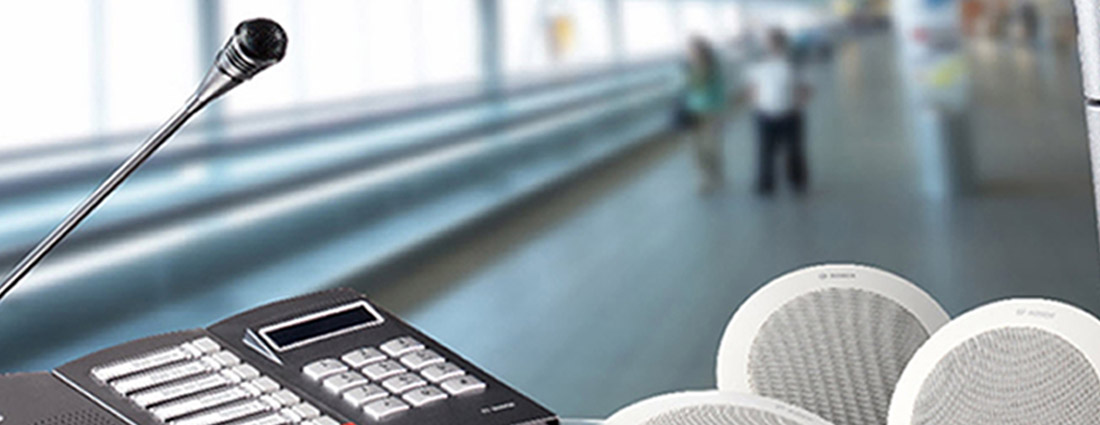 Public Address systems are common in most commercial buildings and public spaces for the communication of announcements, music and alerts. The types of Public Address systems are as wide and various as there are types of buildings and structures with considerations to volume, coverage and zoning configurations needed. So essentially nearly all Public Address systems are designed individually to best suit the environment, aesthetics and include the right features with a suitable amount of simplicity or complexity. As an example a factory space with high levels of noise from machinery would need a completely different type of system and components to a house of worship. Also a shopping arcade's needs would be different to a nightclub with live entertainment and a DJ.
Public Address systems are common in most commercial buildings and public spaces for the communication of announcements, music and alerts. The types of Public Address systems are as wide and various as there are types of buildings and structures with considerations to volume, coverage and zoning configurations needed. So essentially nearly all Public Address systems are designed individually to best suit the environment, aesthetics and include the right features with a suitable amount of simplicity or complexity. As an example a factory space with high levels of noise from machinery would need a completely different type of system and components to a house of worship. Also a shopping arcade's needs would be different to a nightclub with live entertainment and a DJ.
This is why we offer free quotations following information gathering, and if required site inspections to offer the best solution for each customers needs as an individual, rather than a one size fits all scenario.
Listed below are some ideas and options available that may suit your general needs. All Public Address systems have some common components.
Firstly an input signal or music source to be distributed to the target audience or space. In the most simple of systems a desktop paging microphone is ideal for general paging and announcements by a receptionist or supervisor. Many phone systems can also interface with a PA system. Back ground music can be played via a variety of devices, like a radio tuner or CD player.
Secondly a mixer-amplifier, that will provide control and adjustment of the inputs and allow various levels of control and routing to the speakers. In most simple systems a combination mixer/amplifier of suitable output power to match the number of speakers is all that is required. In more complex systems a dedicated mixer with zoning features and remote panels can be used in conjunction with numerous booster amplifiers.
Finally the speakers. There are a vast range of speakers that have been designed for specific uses. Some examples are: Flush-mount ceiling or wall speakers, Surface mount speakers, weather-proof speakers, horn speakers and some special purpose designs.
Additional controls can be incorporated to provide more flexibility and system control. These can be located away from the main system components and allow control of a few speakers in an area or even more complex system operations
Emergency voice notification systems, which are required in some occupancies by the International Building Code (IBC) and NFPA 5000 – Building Construction and Safety Code, are required to be designed in accordance with NFPA 72 – National Fire Alarm and Signaling Code. Which edition of NFPA 72 is applicable to is identified in the applicable building code or by the project documents.
Contact us today to have the latest Public Address System installed in your building or on your business campus. -
WATER LEAK DETECTION SYSTEM
 The main application of water leak detection system is for industrial and commercial buildings. Leak detection is what protects your infrastructure. Water and electricity just don't mix. But there are more reasons for monitoring water ingress, leaks and flooding in facilities.
The main application of water leak detection system is for industrial and commercial buildings. Leak detection is what protects your infrastructure. Water and electricity just don't mix. But there are more reasons for monitoring water ingress, leaks and flooding in facilities.
1. Water damage in commercial buildings
Water damage refers to the intrusion of water into buildings. The damage can take a few hours or a few months to reveal itself. It causes a major loss of property in most cases. Water damage is most ruinous in offices and factories.
In early stages, you will see water spots on surfaces. This is usually ignored and thought to be “normal”. It is typically considered part of a building’s wear and tear. However, it can turn into a big problem.
In later stages, you could see corrosion on equipment, rust, and more. By this point, the damage is very bad. It will not be easy to fix. This will be discussed in more detail later.
Water damage is actually very common. It occurs three times more often than fire damage. In fact, 14,000 buildings in the US experience water damage per day. It can not only occur in commercial buildings but also offices, schools, ie. in any type of building.
Water damage insurance companies end up paying over 2 billion dollars a year. This is just to cover the costs of water damage to buildings! Water damage claims are the fastest growing claims right now.
Many people overlook just how serious a threat water damage is to their buildings. This is largely due to most of the damage being under the floors. The damage is also sometimes behind the walls. There, it is not clearly visible and is easily forgotten about.
However, water damage can be incredibly expensive. It can even cause up to multi-million dollars in irreparable damage! Having a water ingress detection system is therefore very important. Water damage can then be detected early. It will not be given a chance to turn into something too serious.
Water damage typically occurs due to plumbing. Maybe a water instalment was not properly fixed or not replaced when worn out. It could then lead to a leak. To avoid such leaks, visual checks should be done often. A better way to do it is to install water sensors in your facilities. This is so water damage can be discovered before it becomes too severe.
Sometimes, natural causes such as heavy rain or a thunderstorm can cause water damage. Of course, this cannot be prevented. Having a leak finding and detection system will help you identify the water damage.
In offices, most companies spend thousands, even millions of dollars to facilitate maximum uptime. “Uptime” refers to the amount of time that a computer or machine is operating. In doing so, they forget that water damage can severely affect their uptime. They do not invest in having a leak detector.
But once water gets into a machine, it stops working. Sometimes, insurance does not cover the damage. Even more money is then required to fix the machine. In some cases, a new machine will have to be bought. Uptime is then negatively affected.
This problem is easily fixed by simply remembering to check for water damage. The best solution is to install a water leak detector. A detector will set off an alarm if there is a water leak. Steps can then be taken to quickly nip it in the bud. This will prevent severe water leaks.
Did you know that water ingress detection systems may qualify you for credits on your insurance? The same goes for temperature monitoring systems. Speak to your insurance company if you are considering installing such a system.
Contact us today to have the latest WLD installed in your building or on your business campus.
2. Water and Data Centers
You may think your data centers and server rooms are free from water damage. There isn’t even any water there to begin with! However, this is not true.
Data Centers have a big hidden water use and actually highly depend on water. California houses more than 800 large data centers that consume about 158,000 Olympic swimming pools of water. The main reason for using water in data centers is that cooling requires a lot of water. A medium data center needs around 400 million liters of water a year! A data center can use more clean water than an entire town. The Utah Data Center is also known as the Intelligence Community Comprehensive National Cybersecurity Initiative Data Center. That data center is expected to use 1.7 million gallons of water on a daily basis.
Companies such as Microsoft and Google try to reduce their water needs. Whenever possible, they are using outside cooling or by collecting water from rain. Water is cheaper than electricity. As a result data centers will continue to rely on water as a main cooling resource.
Water inside the data center is making a comeback. In the past data centers and server rooms were equipped with Halon fire surpression systems. This gas would prevent water damage. Halon is a gas on its way out. It is being banned due to its contribution to the damage of the Ozon layer. However Halon is known to destroy systems. Other alternative gasses are being banned too due to their negative impact on the environment. This leads data center operators to look at old school technology. Water as a fire surpression solution is on a way back. It allows operators to save big on their fire surpression systems. The latest trend is the use of HI-FOG systems. Similar to a traditional fog, an HI-FOG system generates a fog. But with very small drops of water. So small that it saves up to 90% when comparing to traditional water sprinklers.
The common reasons for activating a disaster recovery plan in a data center are following. Water ingress, smoke, and electrical failure. So one out of 3 is water. Where does water damage come from in data centers or server rooms?
Well, following are known common sources.
- When air conditioning systems break down or leak. Air conditioners pull moisture out of the air. When an air conditioner’s drainage system is broken, the condensed moisture leaks into the walls instead.
- When pipes running through the building have a leak.
- When there is a water leak near the data center/server room.
- When water leaks from the roof.
- When traditional flooding occurs.
Water quality is a contributing factor to the failure of HVAC systems. It happens slowly and is irreversible. At best this leads to a shorter lifespan of the equipment and piping. At worst, you have a leaking cooling system flooding your server room or data center.
So water monitoring in a data center or server room is a must. It is not an option. Use a server room water sensor to detect flooding in server rooms. This is also known as a water leak detection system for server rooms. It will alert you whenever there is a water leak.
For data centers, use a water leak detection system for data centers. These water leak detectors will alert you at the first sign of water damage.
These two sensors will ensure the safety of your data centers and server rooms from water damage. Once you get an alert about a water leak, you can take immediate action. There is thus a much higher chance of you saving the equipment in the room. You do not want to face the effects of water damage. It can be very devastating.
Go beyond your server rooms and data centers. Use a flooding sensor to detect and locate leaks from pipes running through your building. There are several types of pipes that can leak and cause water damage. Examples are humidification pipes, condensation pipes, and pipes used for water cooling.
3. ServersCheck's Water and Flooding Sensor
Luckily, a water flood sensor is extremely easy to set up. All you have to do is attach the water leak detection cable. Make sure it covers the entire length of the pipe.
Any time the sensing cable’s detection senses a leak, it will notify you. You can then take immediate action before the situation gets worse.
After every water leak, these cables have to be completely dried. Only once they are fully dry can they be used again.
ServersCheck provides cheap water detectors for leak detection and water detection. It’s water sensor can detect even the slightest bit of water present on the floor or walls. You can monitor your building for water leaks, wetness, and flooding. It can also detect pipe leaks, leaks under raised floors, and more.
The reliable leak sensing cable is 17 feet (5 meters). It can also be extended up to 100 feet (30 meters). Any time any water touches the cable, an alarm will be triggered. This alarm is known as a water sensor alarm. An alert will then be sent to either your email or your phone. Alerts can also be sent via SNMP Traps.
The cable meets following fire resistance requirements: NFPA 262 “Standard Method of Test for Flame Travel and Smoke of Wires and Cables for use in Air-Handling Spaces”
The water leak sensor is easy to integrate into your Building Management System (BMS). Just use Modbus TCP. If you want to integrate it into your Network Monitoring Systems (NMS), use SNMP.
The Servers Check water leak detection systems is designed for industrial and commercial use; NOT for residential / home use.
Contact us today to have the latest WLD System installed in your building or on your business campus. -
RODENT REPELLENT SYSTEM
 Rodent repellent system is an intelligent system which helps in keeping the rodent away from the protected area with high frequency ultrasonic sounds.
Rodent repellent system is an intelligent system which helps in keeping the rodent away from the protected area with high frequency ultrasonic sounds.
The powerful sound waves generated by the transducers of repellers are within the hearing range of many pests and cause them pain and discomfort. Sometimes they will leave the area being protected immediately, in other cases it will take as long as two to three weeks before significant reduction in infestation occurs.
A vast array of devices that operate above the human-hearing frequency range have been manufactured and marketed as electronic pest control "tools" that can prevent rodent invasions, repel rodents in existing infestations, or enhance conventional rodent control by influencing rodent movements to improve efficiency in an "integrated" approach. Almost all applications recommended for ultrasonic rodent control devices are in structures (e.g., homes, businesses, warehouses). Since the devices are practically inaudible to humans with their output frequencies above the 20-KHz range to guard against rodent problems with no annoying noises in the home or workplace. Most devices generate ultrasonic output in the 70-140 dB range of intensity as measured 12 inches (30.5 cm) from the transducer.
Area of Effectiveness:
A single unit will protect an area of 300 sq.ft. in the work place or cabin. In the areas of the false ceiling / flooring the additional transducer will protect an area of 150 sq. ft. Under difficult conditions, the size of the area can be considerably less. The type of structure, contents and partitions may limit the area of effectiveness. Since the areas that should be protected are those where food and water are present or the point where the pests enter the area it is usually necessary to protect more than one area in the average place. Important considerations are the cleanliness of the area, the means of entry for pests (easy or difficulty), protection of food present in the area, and the availability of alternate source of food and water.
Contact us today to have the latest Rodent Repellent System installed in your building or on your business campus. -
VISITOR MANAGEMENT SYSTEM
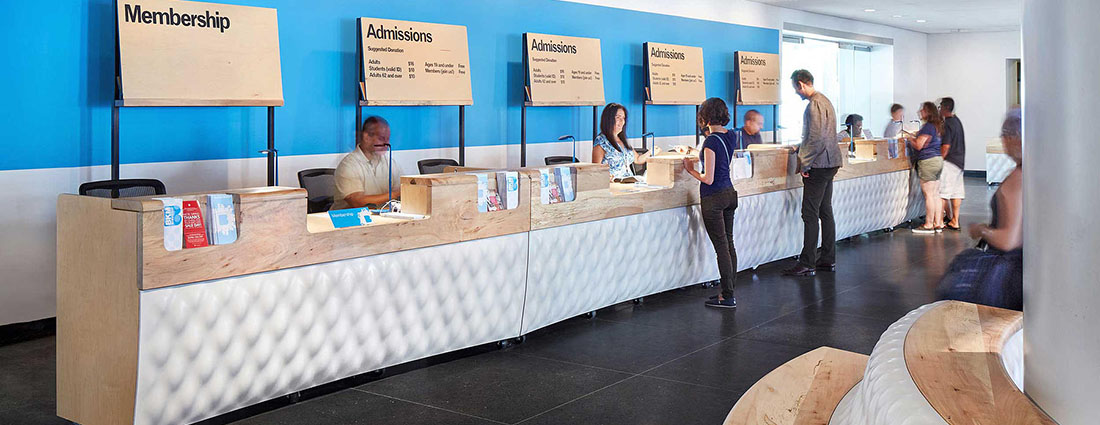 Replace your paper based visitor book with Visitor’s comprehensive front desk solution. Our visitor management solution enables you to efficiently manage your visitors by letting you pre-register visits, capturing arrival and departure details and producing statistical reports to monitor visitor activity.
Replace your paper based visitor book with Visitor’s comprehensive front desk solution. Our visitor management solution enables you to efficiently manage your visitors by letting you pre-register visits, capturing arrival and departure details and producing statistical reports to monitor visitor activity.
Startech allows you to keep a track of who is on you premises; provides an accurate audit trail and allows you to generate an evacuation list in the case of an emergency.
Material Movement & Essential Supplies Tracking
Be it a courier, a shipment delivery or essential commodities like milk, water, food articles etc., register based material movement tracking is a huge challenge.
With Startech’s material movement tracking system, you can know exactly what goods are coming in, what is going out and where it is being delivered. With well defined approval process, SMS/e-mail notifications, real- time reporting etc., you can enable an enterprise level material movement tracking.
Customized Badge Printing
Customize visitor badges with your company logo and the fields of your choice. Startech seamlessly integrates with a variety of printers to print passes from your PC or Kiosk.
Startech takes visitor badges to a whole new level with it’s support to eco-friendly reusable badges and e-badges. Startech can be your partner of choice in your “Go-Green” initiatives.
Alerts & Notifications
The moment visitor checks-in, our visitor management system sends out an e-mail or SMS notification to the host letting them know that the visitor has arrived for the meeting.
In case a visitor forgets to check-out or overstays his visit duration, an automatic alert message is sent to the host, who can either extend the meeting duration or check out on behalf of his visitor, ensuring the visitor list is always up-to-date.
In case of an emergency, SMS alerts are sent out to all the visitors to evacuate the premises.
Interactive Dashboards
Get real-time view of expected visitors, checked-in visitors and checked-out visitors along with their photo. Startech along with simplifying the visitor search process allows you to check-in / check-out visitor through the dashboard, on click of a button.
Visitor Kiosks
Startech’s kiosk based application contains everything you need for self-service visitor sign-in and sign-out. The application guides visitors through an easy to use intuitive step-by-step registration and sign-in process, for both new and existing pre-registered visitors.
Visitor kiosk makes visitor registration simple by letting the visitors enter their details, click a picture, print a pass and check-in to your premises, all by themselves.
Centralized, Real-Time Reports
Know your visitor trends with the help of Startech’s multi dimensional reports. Get a centralized view of who is visiting your premises, why and how often a visitor is visiting. You can also export you reports to Excel / PDF files and store offline.
INFRASTRUCTURE THAT KEEPS YOUR VISITORS, YOUR CUSTOMERS, AND YOUR EMPLOYEES PROTECTED.
Startech Engineers (STARTECH) can design and install an integrated security solution for your business including access control, video surveillance, security communication, intrusion systems, and monitoring. At STARTECH, our service department provides 24/7 technical response to your security needs, including service and maintenance of existing and legacy systems. Our goal is to provide a customized solution for your business to protect your employees, assets and visitors from security threats at all levels.
STARTECH has a long history in the life safety business with a proven track record of protecting life and property. As the industry leader in Fire Detection and Suppression, STARTECH also has the experience and expertise to address all of your electronic security needs.
Startech Engineers creates value by empowering our clients to have one stop solution for all of their Life Safety needs: Fire Detection and Fire Protection. STARTECH can eliminate the disconnect between Security Systems and Fire Safety Systems and provide our clients with a turnkey solution to their Life Safety needs.
Contact us today to have the latest security system installed in your building or on your business campus.
Our solutions include:
Startech Engineers (STARTECH) can design and install an integrated security solution for your business including access control, video surveillance, security communication, intrusion systems, and monitoring. At STARTECH, our service department provides 24/7 technical response to your security needs, including service and maintenance of existing and legacy systems. Our goal is to provide a customized solution for your business to protect your employees, assets and visitors from security threats at all levels.
STARTECH has a long history in the life safety business with a proven track record of protecting life and property. As the industry leader in Fire Detection and Suppression, STARTECH also has the experience and expertise to address all of your electronic security needs.
Startech Engineers creates value by empowering our clients to have one stop solution for all of their Life Safety needs: Fire Detection and Fire Protection. STARTECH can eliminate the disconnect between Security Systems and Fire Safety Systems and provide our clients with a turnkey solution to their Life Safety needs.
Contact us today to have the latest security system installed in your building or on your business campus.
Our solutions include:
-
CCTV
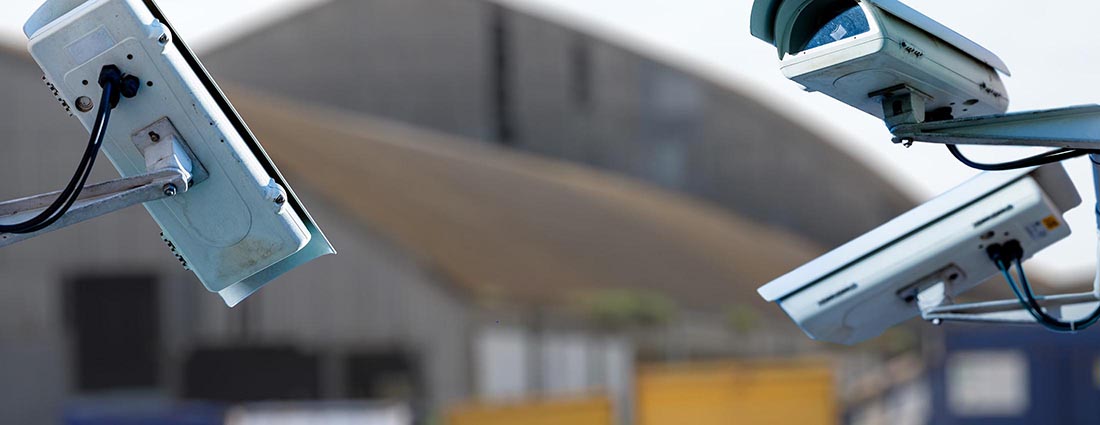 When it comes to securing your business, there are many different types of CCTV to choose from. Surveillance plays a huge part in today’s society, and with cameras all around us, our day-to-day lives are experiencing higher levels of security each day.
When it comes to securing your business, there are many different types of CCTV to choose from. Surveillance plays a huge part in today’s society, and with cameras all around us, our day-to-day lives are experiencing higher levels of security each day.
What many people don’t know, however, is that there are a variety of different types of CCTV camera which suit different situations or premises, and that selecting the proper camera for the right application really is vital.
Our Engineers are well trained in Installation and commissioning of cameras from various reputed brands and types
Below mentioned are various types of cameras installed by Startech:- Bullet Type Cameras are designed for capturing images in a fixed area. These cameras are recognized by their thin and cylindrical design. There are also classifications of Ultra Bullet distinguished by their smaller size and cheaper price.
- Dome Cameras, named after the shape of their housing are designed for in-store installations. It works in two ways as it is unobtrusive but visible, thus, it warns people that the area is protected by a CCTV network and gives comfort to its clients for its security.
- Discreet CCTVs are cameras in disguise, they could look like a fan or any other thing that would not seem suspicious in the area.
- Infrared Cameras are designed for evening lookouts. It captures images with the help of its infrared lighting surrounding its lens.
- Day/Night Types are used for 24/7 installation, these cameras compensate light conditions with its wide dynamic range to function in glare, direct sunlight, reflections and strong backlight.
- Varifocal Cameras are designed to allow zooming in and out without losing focus on the image.
- Network Cameras allow transmission of images through the internet with controlled bandwidth.
- Wireless cameras are cameras that may or may not be connected to the internet. These cameras use signalling devices to transmit images from camera to viewing area.
- PTZ Cameras or pan-tilt-zoom are cameras that can moved. There are variations of these cameras that are programmable and are manually controllable. This allows viewers to have more freedom and control on viewing things.
- High definition cameras are often used in casinos or high risk establishment. With its high resolution lens, capturing images are possible giving viewers a finer detail on taken images.
Contact us today to have the latest CCTV installed in your building or on your business campus. -
ACCESS CONTROL SYSTEM
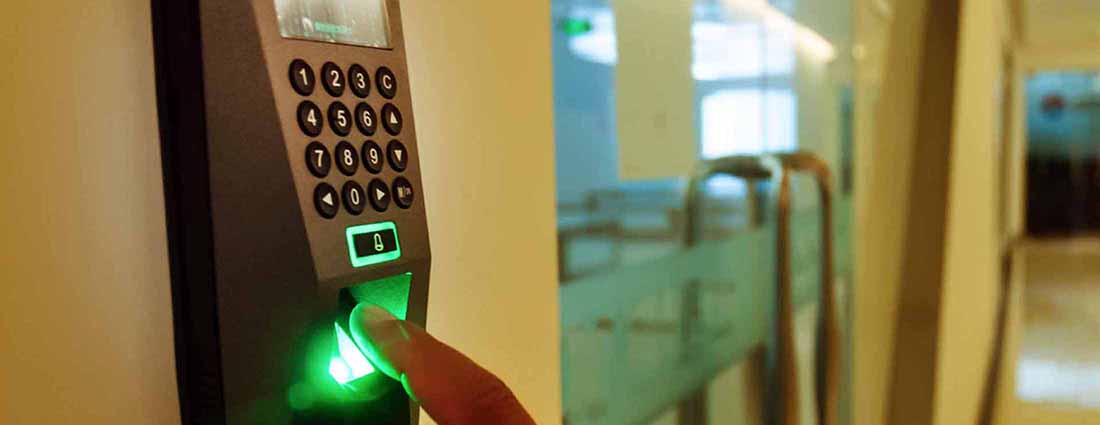 Introduction to Access Control Systems
Introduction to Access Control Systems
What Is An "Access Control System”?
Over the years, access control systems have become more and more sophisticated. Today, the term "access control system" most often refers to a computer-based, electronic card, biometric, retina detection, face detection and may more access control system. The access control system uses a special technology, rather than a brass key, to permit access into the secured area.
When used within this document, the term "access control system" refers to an electronic /biometric etc. access control system.
Access control systems are most commonly used to control entry into exterior doors of buildings. Access control systems may also be used to control access into certain areas located within the interior of buildings.
The purpose of an access control system is to provide quick, convenient access to those persons who are authorized, while at the same time, restricting access to unauthorized people.
Basic Components of an Access Control System Access control systems vary widely in type and complexity. However, most card access control systems consist of at least the following basic components:
Access Cards
The access card may be thought of as an electronic "key". The access card is used by persons to gain access through the doors secured by the access control system. Each access card is uniquely encoded. Most access cards are approximately the same size as a standard credit card, and can easily be carried in a wallet or purse.
Card Readers
Card readers are the devices used to electronically "read" the access card. Card readers may be of the "insertion" type (which require insertion of the card into the reader), or may be of the "proximity" type (which only require that the card be held in a 3" to 6" proximity of the reader. Card readers are usually mounted on the exterior (non-secured) side of the door that they control.
Access Control Keypads
Access control keypads are devices which may be used in addition to or in place of card readers. The access control keypad has numeric keys which look similar to the keys on a touch-tone telephone.
The access control keypad requires that a person desiring to gain access enter a correct numeric code. When access control keypads are used in addition to card readers, both a valid card and the correct code must presented before entry is allowed.
Where access control keypads are used in place of card readers, only a correct code is required to gain entry.
Electric Lock Hardware
Electric lock hardware is the equipment that is used to electrically lock and unlock each door that is controlled by the access control system.
There are a wide variety of different types of electric lock hardware. These types include electric locks, electric strikes, electromagnetic locks, electric exit devices, and many others. The specific type and arrangement of hardware to be used on each door is determined based on the construction conditions at the door.
In almost all cases, the electric lock hardware is designed to control entrance into a building or secured space. To comply with building and fire codes, the electric lock hardware never restricts the ability to freely exit the building at any time.
Access Control Field Panels
Access control field panels (also known as "Intelligent Controllers") are installed in each building where access control is to be provided. Card readers, electric lock hardware, and other access control devices are all connected to the access control field panels.
The access control field panels are used to process access control activity at the building level. The number of access control field panels to be provided in each building depends on the number of doors to be controlled. Access control field panels are usually installed in telephone, electrical, or communications closets.
Access Control Server Computer
The access control server computer is the "brain" of the access control system. The access control server computer serves as the central database and file manager for the access control system; and is responsible for recording system activity, and distributing information to and from the access control field panels.
Normally, a single access control server computer can be used to control a large number of card-reader controlled doors. The access control server computer is usually a standard computer which runs special access control system application software. In most all cases, the computer is dedicated for full-time use with the access control system.
Contact us today to have the latest access control system installed in your building or on your business campus. -
INTRUSION ALARM SYSTEM
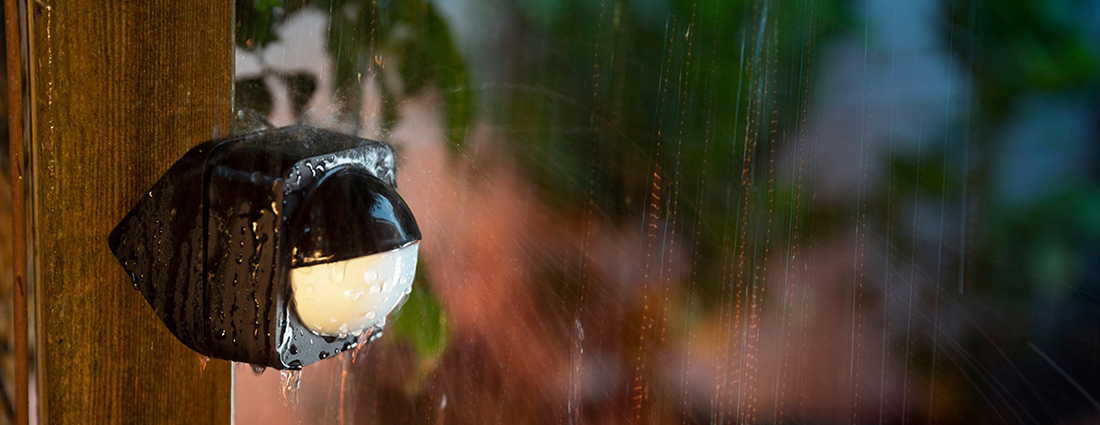 There is a great deal of flexibility in the way an intrusion alarm system can be designed for a building. The designer has a great deal of latitude in selecting the quantity and type of equipment that will be used, and in determining where this equipment will be located.
There is a great deal of flexibility in the way an intrusion alarm system can be designed for a building. The designer has a great deal of latitude in selecting the quantity and type of equipment that will be used, and in determining where this equipment will be located.
Depending on the owner’s security requirements and budget, the designer may choose to design a simple, “bare bones” system, or may choose to design a deluxe, “high-security” system. The primary difference between a simple intrusion alarm system and a more elaborate one is the number and type of detection devices used.
For example, in a low-cost “bare-bones” system, the designer might choose to install detection devices only at a few points in the building where he feels that an intruder would be most likely to enter. An example of this type of system would be a building where contact switches were installed only on the entrance doors to the building.
In a “high security” system, the designer considers every possible way in which an intruder could enter the building, and places detection devices in such a manner that the intruder is quickly detected in every case. An example of this type of system is the building where contact switches are installed on every door, glass breakage detectors are placed near every window, and motion detectors are provided in every room.
In the real world, most intrusion alarm systems are designed to fall somewhere in between these two extremes. Most systems provide more protection than the basic “bare-bones” system with contact switches only, but not the comprehensive protection provided by the “high-security” system with detection devices in every room.
Exactly how many detection devices should be provided in any given building, what type of detection devices should be used, and where these detection devices should be placed is the subject of great debate among intrusion alarm system designers.
While each different system designer has his or her own idea of what the best arrangement of detection devices is, there are four basic “design concepts” which are commonly used:
Perimeter Protection Concept
The “perimeter protection” concept provides detection at the exterior or “perimeter” of the building. The goal of perimeter protection is to detect the intruder at the point of entry.
Complete perimeter protection usually requires that contact switches be installed on every perimeter door and opening window, and that glass breakage detectors be installed near every glass door and window on the exterior of the building.
Interior Protection Concept
The “interior protection” concept provides detection within the interior of the building. The goal of interior protection is to detect the intruder once he has gained entry into the inside of the building.
Complete interior protection requires that motion detectors be installed in every room and corridor of the building. Interior protection can also be achieved by installing contact switches on the interior doors of the building.
Combined Protection Concept
The “combined protection” concept fully combines the detection capabilities of both the perimeter detection concept and the interior protection concept.
The combined protection concept utilizes perimeter detection devices, such as contact switches on exterior doors, as well as interior protection devices, such as motion detectors installed in rooms and corridors.
The combined protection concept provides the benefits of both perimeter protection and interior protection, and is commonly used in “high security” applications, such as at a jewellery store or at warehouses that contain high-value merchandise.
Hybrid Protection Concept
The “hybrid protection” concept utilizes some portions of the perimeter protection concept, and some portions of the interior protection concept.
The goal of the hybrid concept is to take advantage of the benefits of both perimeter and interior protection, while at the same time keeping the cost of the system below the cost of the fully “combined” system described above.
The typical hybrid system uses partial perimeter detection and partial interior protection. An example of a system designed using the hybrid concept would be a building where contact switches were installed on perimeter doors, and motion detectors were installed in hallways and corridors. This system does not provide complete perimeter protection (there are no glass breakage detectors), and does not provide complete interior protection (motion detectors are not provided in every room), yet the combination of detection devices together provides a reasonable level of protection for the building.
There is a great deal of flexibility in the way a hybrid system can be designed. The designer may choose to provide full perimeter protection in some portions of the building, and choose to have only partial perimeter protection in other parts of the building. The same is true with interior protection; complete interior protection can be provided in some areas, while partial or no interior protection can be provided in other areas.
Contact us today to have the latest Intrusion Alarm System installed in your building or on your business campus. -
ENTRANCE CONTROL SYSTEM
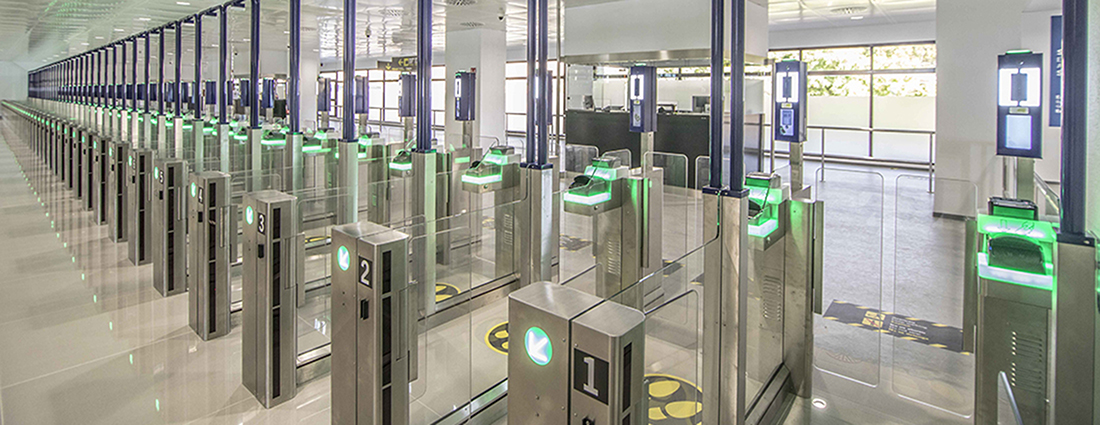 Pedestrian access control systems enable controlled and secure access to areas defined by the operators. They can be used for access control at entrances to office and administrative buildings, industrial installations, banks, authorities and many other places.
Pedestrian access control systems enable controlled and secure access to areas defined by the operators. They can be used for access control at entrances to office and administrative buildings, industrial installations, banks, authorities and many other places.
Full-height rotor turnstile
Single-ENTRY equipment for pedestrians
Full-height rotor turnstiles offer a high level of security for single-entry walk-through crossing points.
They are particularly suitable for securing a site entrance or controlling access to specific secure areas, external and internal. They are firmly anchored to the ground.
They can be configured to manage traffic flows in one or both directions.
Tripod turnstile
Tripod turnstiles guarantee secure entry to certain areas of buildings. More compact than full-height rotor turnstiles, they control single-entry access for pedestrians.
They are particularly well suited to high-traffic reception environments and help to control traffic flow (one entry at a time).
Tripod turnstiles are activated by an access reader that can be fitted directly to the turnstile or controlled remotely. When the access control system grants entry, the turnstile opens the access point for the visitor or employee.
Secure fast lane
Secure fast lanes allow single entry to specific access areas inside buildings, allowing pedestrian traffic to flow freely (traffic flow up to twice as fast as a tripod turnstile).
They offer a high level of security, and are easily integrated in the building architecture with their clean lines and discreet aesthetics.
Floor space requirements vary according to the model, although the speed of access they provide is a key asset.
Barrier arms
Access control for vehicles
Barriers are used to manage vehicle access. They can be controlled from Security access control software. Different formats are available to suit the configuration of your external areas:- Automatic road barrier
- Up and over gates
- Slide beams
- Retractable barriers
Contact us today to have the latest Entrance Control System installed in your building or on your business campus.


